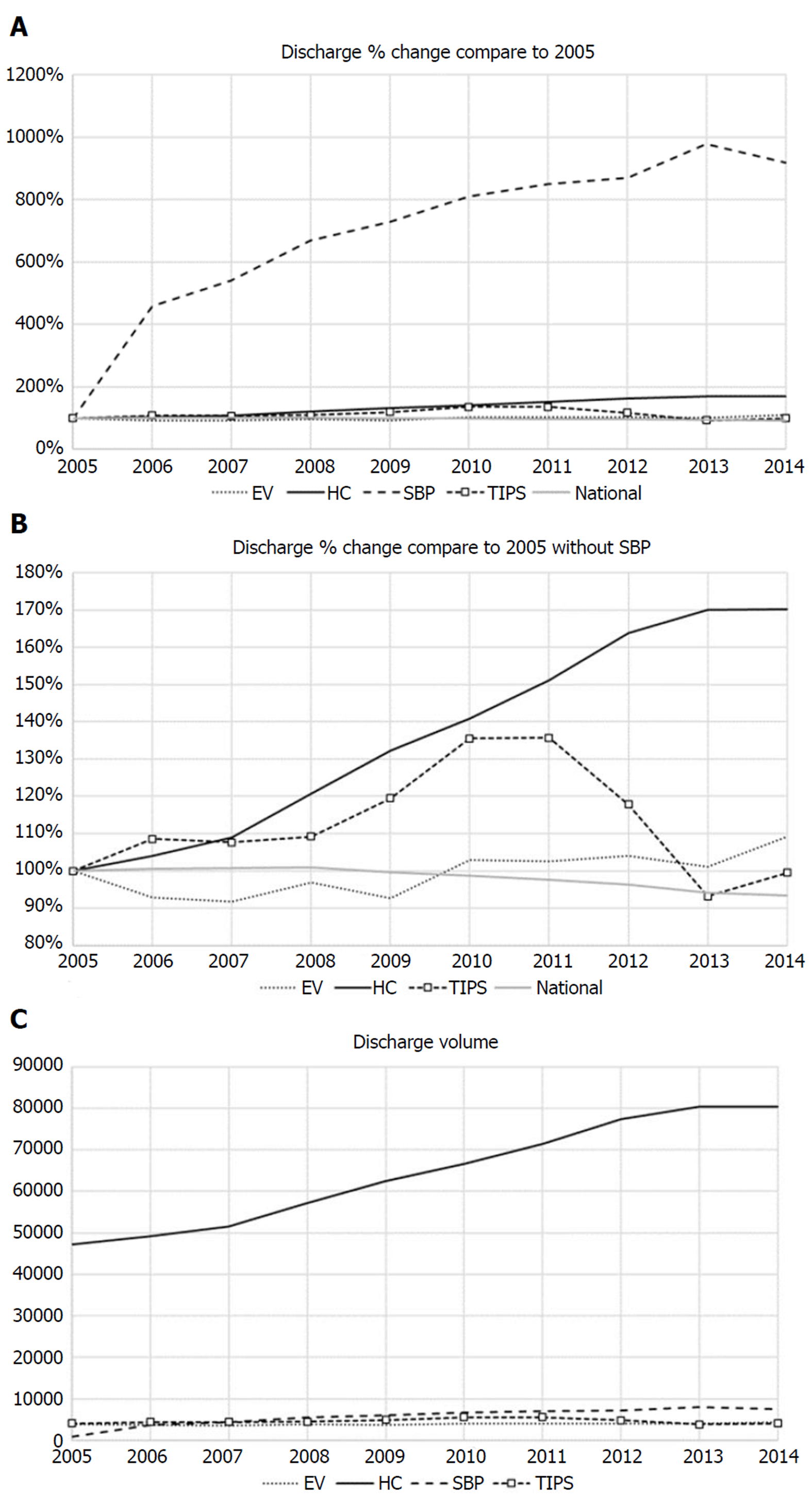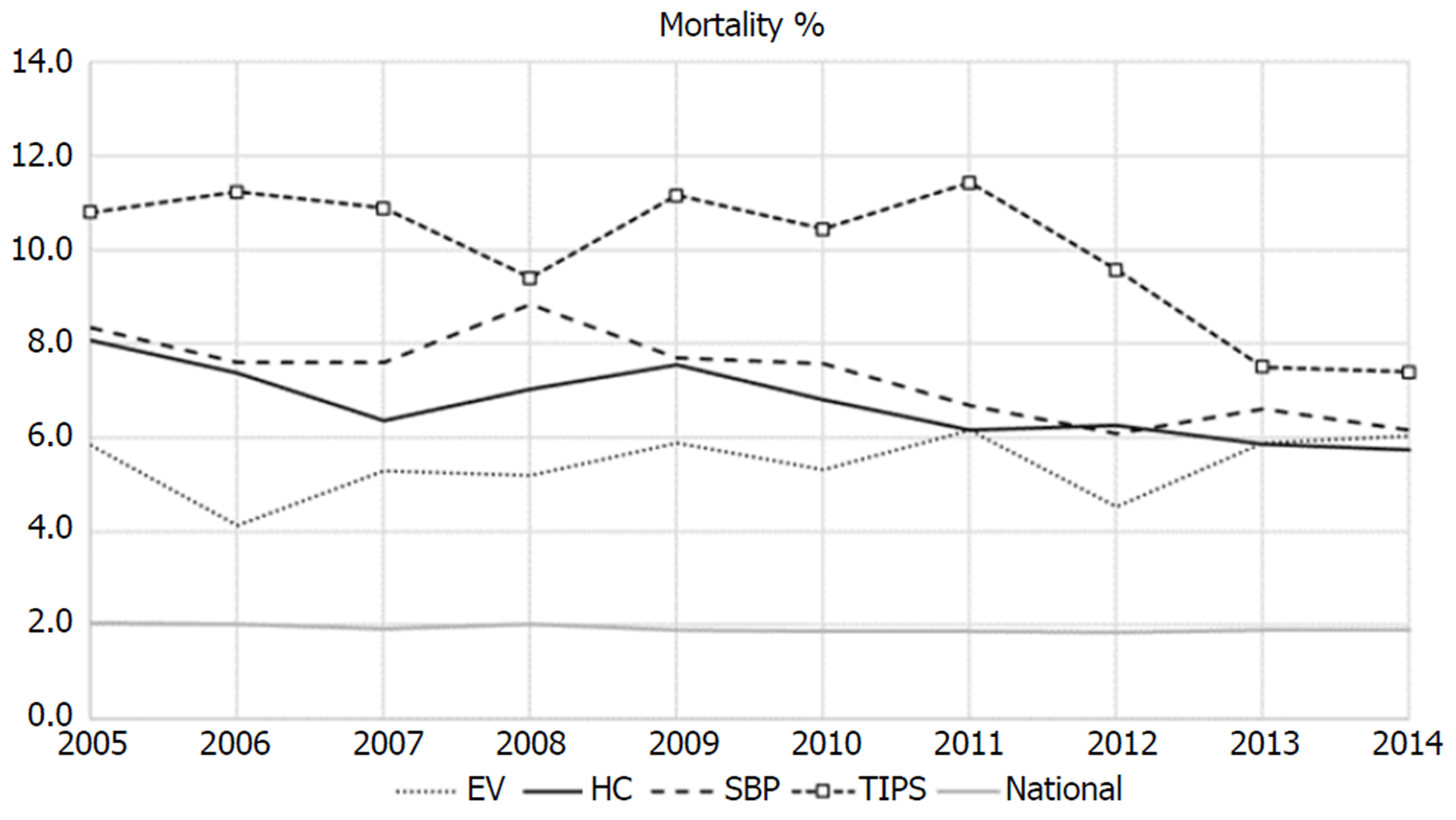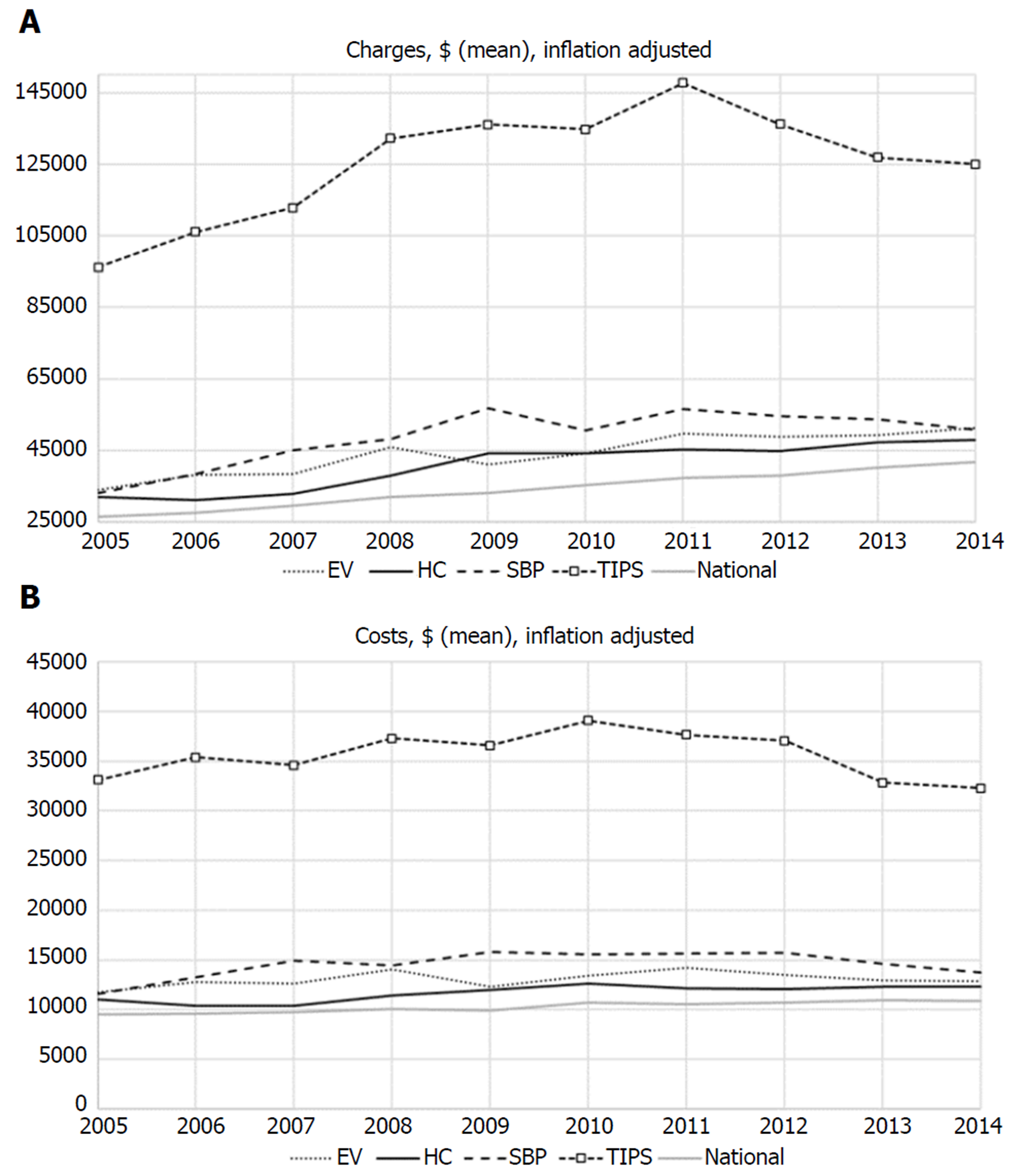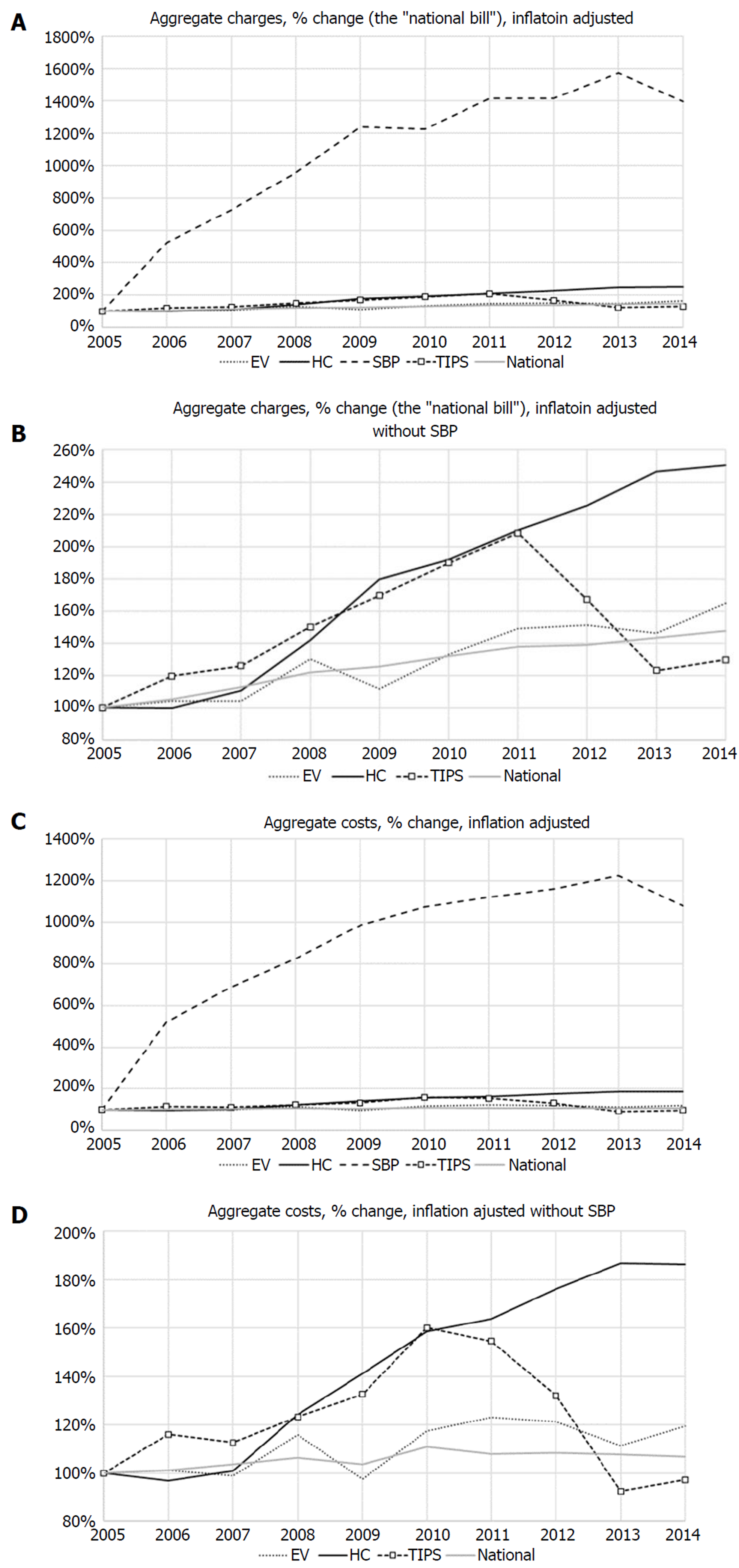Copyright
©The Author(s) 2019.
World J Hepatol. Jan 27, 2019; 11(1): 74-85
Published online Jan 27, 2019. doi: 10.4254/wjh.v11.i1.74
Published online Jan 27, 2019. doi: 10.4254/wjh.v11.i1.74
Figure 1 10-year temporal trends of discharges.
A: Percent changes of discharge numbers compare to 2005; B: Percent changes of discharge numbers compare to 2005 without SBP; C: Discharge volume for cirrhosis associated conditions. From 2005 to 2014, the primary diagnosis of four cirrhosis related pathologies were all trending up except TIPS. EV: Esophageal varices with bleeding; HC: Hepatic encephalopathy/coma; TIPS: Transjugular intrahepatic portosystemic shunt; SBP: Spontaneous bacterial peritonitis.
Figure 2 10-year temporal trends of mortality rates.
In-hospital mortality rates for each condition significantly decreased from 2005 to 2014 except for esophageal varices with bleeding. EV: Esophageal varices with bleeding; HC: Hepatic encephalopathy/coma; TIPS: Transjugular intrahepatic portosystemic shunt; SBP: Spontaneous bacterial peritonitis.
Figure 3 10-year temporal trends of mean length of stay and mean ages.
A: 10-year temporal trends of mean length of stay (LOS); B: 10-year temporal trends of mean ages. Mean LOS for transjugular intrahepatic portosystemic shunt (TIPS) decreased from 9.6 d in 2005 to 8.0 in 2014 with 17%. However, other cirrhosis related conditions and national LOS did not show any significant changes. TIPS had persistently higher LOS as compared to other conditions. Mean ages of cirrhosis-associated conditions were consistently higher than national average, and HC persistently had the highest mean age. EV: Esophageal varices with bleeding; HC: Hepatic encephalopathy/coma; TIPS: Transjugular intrahepatic portosystemic shunt; SBP: Spontaneous bacterial peritonitis.
Figure 4 Inflation adjusted 10-year temporal trends of mean charges and mean costs.
A: Shows mean charges of four cirrhosis-associated conditions that have been increasing more than 30% compared to 2005 data, after adjustment for inflation; B: Demonstrates that transjugular intrahepatic portosystemic shunt (TIPS) has persistently higher cost related to hospitalizations. Compared to mean charges, mean costs had less variation over time. The mean costs of TIPS, EV and SBP did not increase significantly over time (all P > 0.15). EV: Esophageal varices with bleeding; HC: Hepatic encephalopathy/coma; TIPS: Transjugular intrahepatic portosystemic shunt; SBP: Spontaneous bacterial peritonitis.
Figure 5 Inflation adjusted 10-year temporal trends of aggregate charges and aggregate costs.
Same figures without SBP for charges and costs. A and B: After adjustment for inflation, aggregate charges for hospitalizations related to HC, SBP, transjugular intrahepatic portosystemic shunt (TIPS) and national increased from 2005 to 2014 except EV; C and D: Inflation adjusted aggregate costs of hospitalization for EV, HC, SBP and national increased from 2005 to 2014, while TIPS trended toward a decreased. EV: Esophageal varices with bleeding; HC: Hepatic encephalopathy/coma; TIPS: Transjugular intrahepatic portosystemic shunt; SBP: Spontaneous bacterial peritonitis.
- Citation: Sempokuya T, Zhang G, Nakagawa K. Temporal trends of cirrhosis associated conditions. World J Hepatol 2019; 11(1): 74-85
- URL: https://www.wjgnet.com/1948-5182/full/v11/i1/74.htm
- DOI: https://dx.doi.org/10.4254/wjh.v11.i1.74













